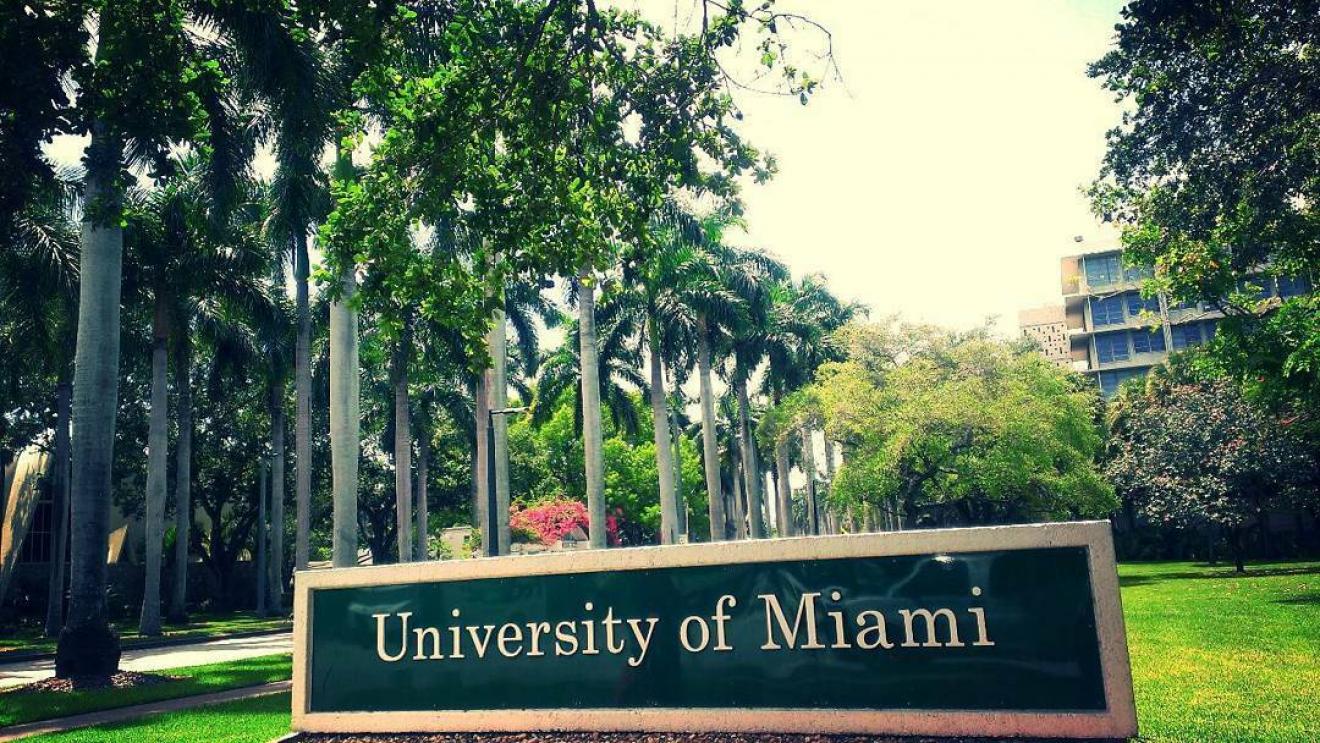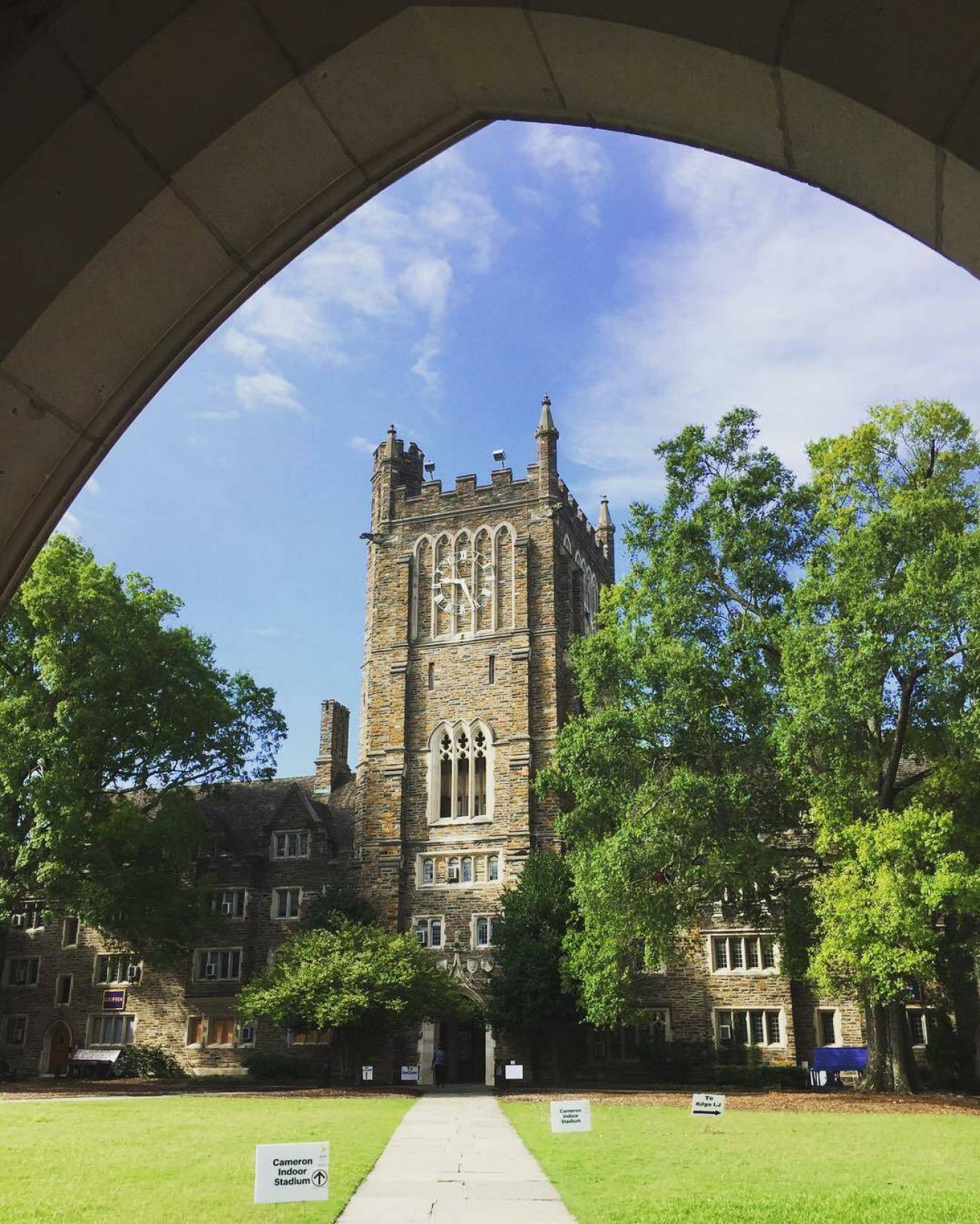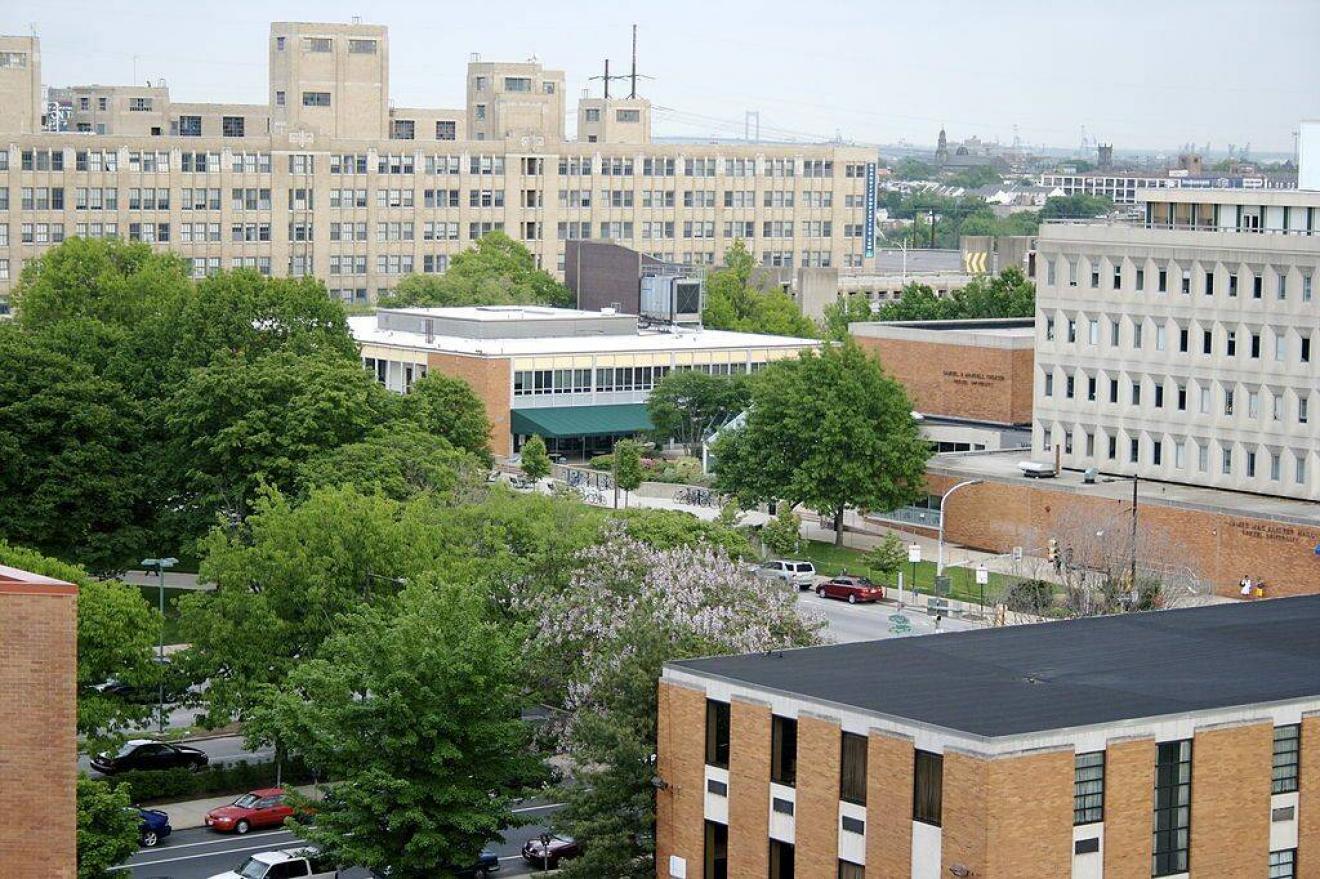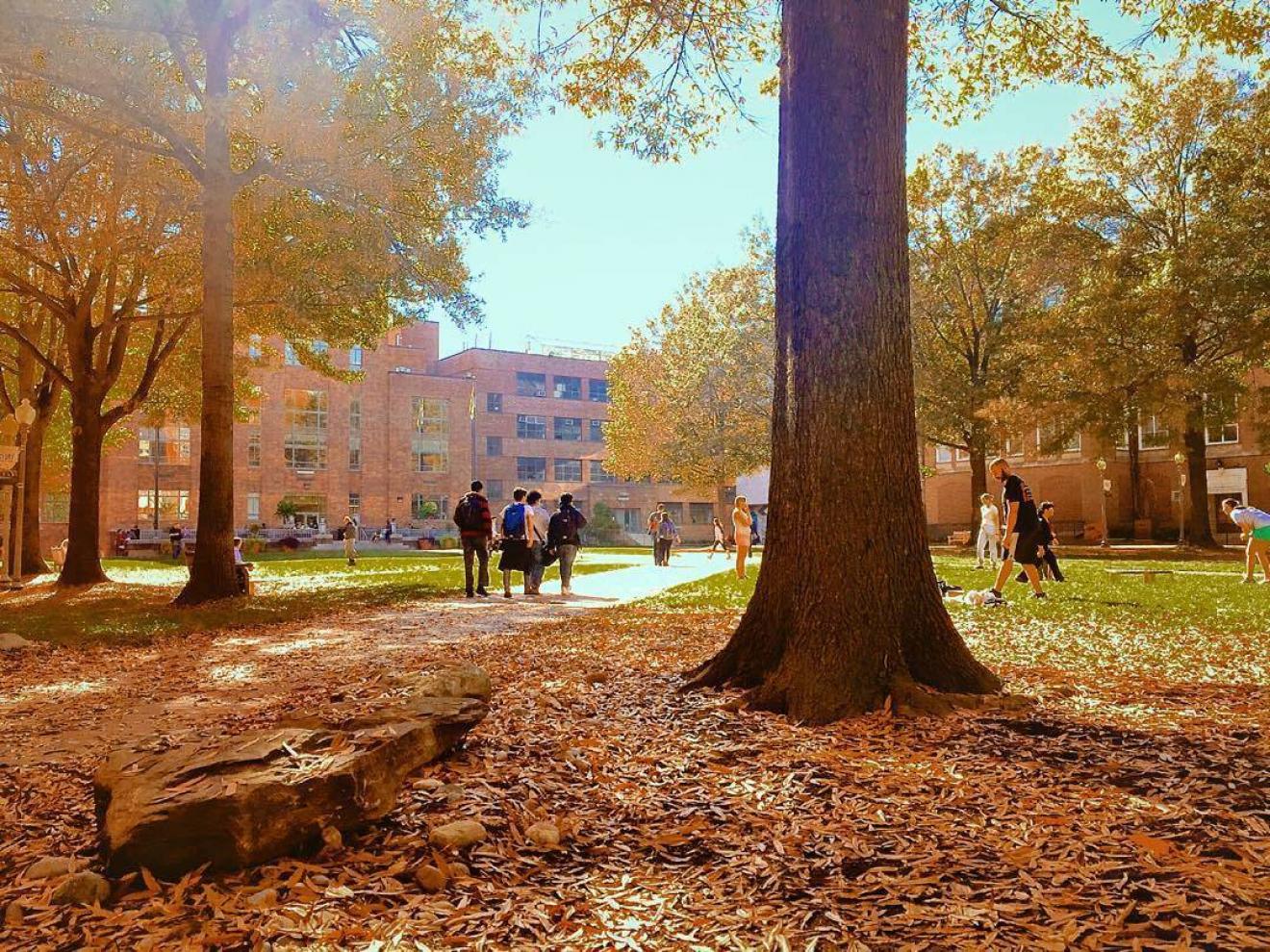Best Physical Therapy/Therapist colleges in the U.S. 2025
Physical therapists help people who have injuries or illnesses improve body movement and manage pain. They diagnose patients dysfunctional movements by observing them stand or walk, use exercise and equipment to ease patients pain, evaluate patients progress, and set up therapy plans for patients. PTs usually work in private offices and clinics, hospitals, and nursing homes. The 2010 median pay for physical therapists was $76,310, and the job outlook from 2010-2020 is 39 percent, which is must faster job growth than average.
Since the Commission on Accreditation in Physical Therapy Education (CAPTE) no longer accredits undergraduate degrees, PTs are required to earn a postgraduate professional degree from an accredited academic program. A student can either earn a Master of Physical Therapy or a Doctor of Physical Therapy degree. In addition, all states require physical therapists be licensed.
Courses include anatomy, ethics, neuroscience, chemistry, orthopedics, biology, physiology, therapeutic applications, pharmacology, physical therapy modalities, and kinesiology. Students will learn how to plan, prepare, and carry out individual treatment programs; record data in a patients chart; and identify anticipated progress. Students should be prepared to undergo clinical rotations under the supervision of a licensed physical therapist. These clinicals provide students with hands-on experience while practicing therapy procedures and diagnosing patients.
Click Here to See the Best Colleges in the USBest Physical Therapy/Therapist colleges in the U.S. for 2025

Chartered in 1831, New York University is a private school with a massive $5.8 billion endowment. NYU Steinhardt's Department of Physical Therapy is conveniently located near teaching hospitals and offers a range of degree options:
-
Clinical Residency in Orthopedic Physical Therapy certificate
-
Master of Arts in Physical Therapy with a Concentration in Pathokinesiology
-
DPT (entry level)
-
DPT (for practicing professionals)
-
Research in Physical Therapy PhD
-
PhD in Rehabilitation Sciences
Founded in 1836, Atlanta, Georgia’s Emory University is linked to Emory Healthcare, the state’s largest healthcare system featuring 11 hospitals, a clinic, and 250 provider locations. Emory’s School of Medicine features a dedicated Division of Physical Therapy with a range of graduate programs:
- DPT
- Dual DPT/PhD
- DPT-MPH
- DPT-MBA
- DPT/MA Bioethics
- In-house residency training
The school’s pre-health advising site offers additional details for PT hopefuls!

Located on 453 sunny acres in Coral Gables, Florida, University of Miami is known for its medical programs, many of which are held at UM’s nearby Leonard M. Miller School of Medicine campus.
Undergraduate students can select from a range of healthcare-related bachelor’s options such as the BS in Health Science Pre-Physical Therapy track. Qualified graduate students may apply to the DPT or PhD in Physical Therapy programs, the latter of which was “designed to prepare physical therapists for leadership positions in academic and research settings.”
Oklahoma City University offers 1 Physical Therapy/Therapist degree programs. It's a small, private not-for-profit, four-year university in a large city.

Known for its selectivity and high academic standards, North Carolina’s Duke University always ranks among the nation’s best schools. With a $12.7 billion endowment, it’s also a very well-funded institution with top-notch facilities and faculty at the School of Medicine.
The Duke DPT features a team-based learning approach and offers supervised, hands-on clinical experience. For academic year 2020-21, the DPT program accepted 108 of the ~1,000 applicants, helping ensure positive outcomes by enrolling the best candidates. The program boasts a 100% average graduation rate (2019-2021) and 100% average employment rate (2018-2020).

Founded in 1891 in Philadelphia, Pennsylvania, Drexel is home to over 24,000 enrolled students and features a unique cooperative education learning model “allowing students to learn alongside experts in their fields and see firsthand how these innovators are shaping the professional world.”
The BS/DPT Bridge Program is a convenient way for students to complete degree requirements nearly a year faster than average! Qualified students can also apply directly to the full-time DPT program which spans ~3 years/11 academic quarters. Drexel has several PT and rehabilitation teaching and research facilities for in-person students to learn and practice their skills.

George Washington University is a federally chartered school situated in the nation’s capital since 1821. GW’s DPT program is “affiliated with a Medical School, a School of Public Health, and a University Hospital,” allowing for convenient access to learning resources. The school is partnered with local providers to offer residency programs for special areas such as neurology, orthopedics, and pediatrics.
There is an abundance of exciting continuing education opportunities for working PTs ready to keep learning via clinical and evidence-based courses. There are also online healthcare degrees that may be applicable on the path towards a DPT.
San Diego State University offers 2 Physical Therapy/Therapist degree programs. It's a very large, public, four-year university in a large city. In 2022, 38 Physical Therapy/Therapist students graduated with students earning 38 Doctoral degrees.

Considered a Public Ivy because of its commitment to academic excellence, the University of North Carolina at Chapel Hill features excellent PT options under its Department of Allied Health Services
- The DPT program features a 100% employment rate for grads (2018-2021)
- The PhD in Human Movement Science
- A distance education Transitional DPT for working PTs
UNC also features invaluable residency opportunities in orthopedics, pediatrics, and neurology, as well as continuing education opportunities.
Mercer University offers 1 Physical Therapy/Therapist degree programs. It's a medium sized, private not-for-profit, four-year university in a midsize city. In 2022, 38 Physical Therapy/Therapist students graduated with students earning 38 Doctoral degrees.
Find local colleges with Physical Therapy/Therapist majors in the U.S.
What is Physical Therapy/Therapist?
The human body is prone to major and minor injuries, temporary and chronic illnesses, and normal wear and tear from the aging process. All of these issues can cause patients serious pain and restrict their ability to move certain body parts freely. That’s where physical therapists come in!
Rather than jumping straight to surgical procedures, physical therapy provides a noninvasive alternative in which doctors diagnose, counsel, train, and treat patients on exercises, stretches, hands-on therapy techniques, and related equipment.
As an area of study, physical therapy trains students in human anatomy, kinesiology, biomechanics, neuroscience, and exercise physiology. Students may begin with an associate then advance to a related bachelor’s, master’s, and ultimately a Doctor of Physical Therapy if they want to be licensed in their state and certified by the Federation of State Boards of Physical Therapy.
Graduate programs cover research methods and require supervised clinical practice via a residency. Students who wish to specialize further may obtain additional certifications in areas such as orthopedics, geriatrics, or sports medicine.
Physical Therapy/Therapist Degree Overview
Around the world, the population is not only increasing, but people are living longer. As a result, there’s an ever-growing need for healthcare professionals to take care of everyone. Physical therapists are key critical specialists who help patients suffering from pain and loss of motion caused by injuries, illnesses, and normal aging.
Fully licensed, board-certified physical therapists must hold a Doctor of Physical Therapy degree. All states require them to be licensed, but along the way, students must complete related bachelor’s and master’s programs. Many people in this field start by first completing an associate degree and then working as a physical therapist aide or assistant, gaining hands-on experience before or while pursuing their advanced degree.
Associate Degree in Physical Therapy/Therapist
An associate degree isn’t necessary for those who are working on a bachelor’s. However, this degree can qualify you for entry level positions if you want to start working and gaining practical experience.
An associate generally requires 60 semester credit hours and can take two years/five semesters to complete, if attending full-time. According to the American Physical Therapy Association, the main areas of PTA study are “anatomy, physiology, exercise physiology, biomechanics, kinesiology, neuroscience, clinical pathology, behavioral sciences, communication, and ethics/values.” 75% of PTA programs are taught in classrooms, while the remaining work requires clinical practice.
Another name for this degree type is Associate of Occupational Science, Physical Therapist Assistant. Upon completing this degree, graduates can take the National Physical Therapy Examination and apply for state licensure as a PTA.
Bachelor's Degree in Physical Therapy/Therapist
There are different PT-related bachelor’s degree options, such as a Bachelor of Health Sciences or Bachelor of Exercise and Sports Science. A bachelor’s degree typically requires 120 semester credit hours and takes four years to finish, if attending full-time. Part-time attendance may take twice as long, depending on course load.
Note, a bachelor’s will not qualify you to be a physical therapis. That requires a doctorate. However, this degree, along with passing the National Physical Therapy Examination and obtaining state licensure, may qualify you for better physical therapist assistant jobs and will be you one step closer to being a PT, if that’s your goal.
A bachelor’s can further prepare PTAs to perform manual therapy, including helping patients with range of motion and joint mobilization work. They can’t perform evaluations but can administer electrotherapeutic modalities such as transcutaneous electrical nerve stimulation.
In addition to the topics listed in the associate section (above), bachelor’s students may also take courses in pharmacology, medical terminology, and technical writing.
Master's Degree in Physical Therapy/Therapist
The next step on the journey to becoming a PT, a master’s may take an extra two years or more to finish, if going to school full-time. Like the bachelor’s level, there are different PT-related options to choose from, such as:
-
Master’s in Occupational Therapy
-
Master’s in Therapeutic Recreation
-
Master’s in Rehabilitation Science
In order to perform evaluations as a PT, students must continue their education through doctoral studies and supervised clinical work. Some bridge degree programs are listed as BS to DPT, seeming to skip right over the master’s since a doctorate is required to practice.
Doctoral Degree in Physical Therapy/Therapist
Per the American Physical Therapy Association, “to practice as a physical therapist in the U.S., you must earn a doctor of physical therapy degree from a Commission on Accreditation in Physical Therapy Education-accredited physical therapist education program and pass a state licensure exam.” The Bureau of Labor Statistics confirms that “Physical therapists entering the occupation need a Doctor of Physical Therapy (DPT) degree.”
DPT programs can take three years, not counting post-graduation clinical residency requirements which last an additional year or so. Some PTs obtain advanced specialization skills by participating in fellowship programs, extending their education even further.
The APTA notes common DPT coursework includes “biology/anatomy, cellular histology, physiology, exercise physiology, biomechanics, kinesiology, neuroscience, pharmacology, pathology, behavioral sciences, communication, ethics/values, management sciences, finance, sociology, clinical reasoning, evidence-based practice, cardiovascular and pulmonary, endocrine and metabolic, and musculoskeletal.”
Certification and Licensure in Physical Therapy/Therapist
Licensure
Per BLS, all states require Physical Therapists to obtain a license to practice. Most states require physical therapist assistants to be licensed, too. The main criteria for licensure is to achieve a passing score on the National Physical Therapy Examination (NPTE), administered by the Federation of State Boards of Physical Therapy (FSBPT).
The NPTE testing window is only open four times a year (with different dates for PT and PTA testing). Registration and payment are required a few weeks prior to the test date, as is jurisdiction approval.
FSBPT notes that “the licensing authority (board) in the state or jurisdiction where you intend to be licensed” must “approve a candidate to sit for the NPTE” and will “require that the candidate is a graduate of or graduating from a PT or PTA program that meets the accreditation standards of CAPTE or has an education that is has been determined to be substantially equivalent by a recognized credentialing agency.”
Each state has its own separate licensure criteria above and beyond this exam. For instance, roughly half of all states require passing a jurisprudence exam, and a handful of states require completion of a Jurisprudence Assessment Module.
States may also need a background check before granting licensure, and may expect PT/PTAs to complete continuing education to maintain their license. It is useful to contact the applicable state licensing authorities to learn the most up-to-date details.
Certification
Many Physical Therapists choose to specialize in areas that require additional board certification. Here are the current ABPTS areas of specialization:
-
Cardiovascular & Pulmonary
-
Clinical Electrophysiology
-
Geriatrics
-
Neurology
-
Oncology
-
Orthopedics
-
Pediatrics
-
Sports
-
Women's Health
-
Wound Management
Other than ABPTS, there are other organizations that also grant certifications. A few examples are:
-
Board Certified in Biofeedback
-
Board Certified in Neurofeedback
-
Board Certified in Pelvic Muscle Dysfunction Biofeedback
-
Technician Certification in Biofeedback
-
Technician Certification in Neurofeedback
-
Medical Exercise Training Institute - Post Rehab Conditioning Specialist
-
American Board of Physical Therapy Specialties - Women's Health Certified Specialist
-
American Board of Wound Management - Certified Wound Specialist
-
Council on Professional Standards for Kinesiotherapy - Registered Kinesiotherapy
-
Hand Therapy Certification Commission, Inc. - Certified Hand Therapist
National Strength and Conditioning Association - Certified Strength and Conditioning Specialist
What Can I Do with a Degree in Physical Therapy/Therapist?
The type of work you can perform with a physical therapy degree depends on the degree, board certifications, and licensure.
There is a range of different locations where PT/PTAs are employed. According to BLS, this is how employment of PT/PTAs is broken down:
-
32% of physical therapists work in PT-related offices
-
28% work in hospitals
-
11% work in home healthcare positions
-
6% work at nursing/residential care facilities
-
6% are “self employed”
Below are the main types of career options, including physical therapy salary estimates:
Physical Therapist Aide
Physical therapy aides work alongside PT/PTAs to perform a variety of administrative and housekeeping duties, such as cleaning work areas, prepping equipment, escorting patients, and booking appointments.
This role may not need any college degree to start, though having a few relevant classes under your belt would help your application stand out. The American Medical Certification Association offers an optional PT Technician/Aide Certification which may or may not be beneficial. PT aide work schedules may be full- or part-time.
-
Median pay: $28,450
-
Top 10% of earners: $40,580+ (as of 2020)
Physical Therapist Assistant
Physical therapist assistants work closely with PTs to assist patients throughout the course of their therapy appointments. PTAs treat and educate patients and family members, per the therapists’ prescribed care plan. This may include offering massage or stretching support and demonstrating proper equipment usage. PTAs report additional notes or findings to the doctor. They supervise PT aides, when needed, or may perform the work of PT aides in some cases. This role requires at least a PT-related associate degree and state license, plus any specialized certifications, as needed.
-
Median pay: $59,770
-
Top 10% of earners: $82,470+ (as of 2020)
Physical Therapist
Physical therapists work with patients to improve range of motion and reduce pain caused by medical conditions, illnesses, or injuries. They develop and adjust care plans and educate patients and family members, as needed. PTs may specialize in certain types of care like orthopedics, which requires additional board certification. They may also have supervisory responsibility over their PTAs. This role requires a Doctor of Physical Therapy (DPT) degree, state license, and applicable board certifications.
-
Median pay: $91,010
-
Top 10% of earners: $126,780+ (as of 2020)
Earning an Online Physical Therapy/Therapist Degree
A great deal of the coursework for physical therapy degrees can be completed online. However, due to the nature of physical therapy work, hands-on practice is clearly essential.
Students who attend online programs at all levels (associate, bachelor’s, master’s, and DPT) will notice that supervised clinical work is usually listed somewhere in the requirements. Thus, Physical Therapy programs are typically either hybrid (partially online, with an in-person component) or entirely on-campus/in-person.
Online physical therapy degrees are in demand because of their flexibility and convenience, but most have the same rigorous standards as on-campus programs. Several top schools in the nation offer fully-accredited, online programs featuring the same high quality curricula that students receive in-person, taught by experienced faculty who understand how to teach effectively via distance learning formats.
Again, physical therapy degrees will, due to the nature of the subject matter, require some element of live practice and training. That’s why most programs are considered hybrid (i.e., done both online and in-person). Still, having the ability to take most courses online makes a huge difference for students who might otherwise face insurmountable barriers to accessible educational options.
As average, life expectancy has gotten longer thanks to advances in medicine. More Americans are expected to require PT services as they get older. Online physical therapy programs are critical for ensuring enough students can learn the skills needed to enter this career field, which is projected to grow 21% in the coming decade. Without these empowering online schools, the country could face a shortage of qualified PTs to help the ever-increasing number of patients who need them!
Just remember — make sure your online degree in physical therapy is accredited by the Commission on Accreditation in Physical Therapy Education.
Physical Therapy/Therapist FAQ
Expert Testimonials
Susan Overman has worked as a physical therapist assistant for 15 years, the last 10 of which have been spent working with special-needs children in elementary schools in Arizona.
Physical Therapist Assistant Career Path
Susan ended up in physical therapist assisting after a career in interior design. “It was a second career for me," she says, “as it is with a lot of physical therapist assistants. It was something that I had been interested in for a long time." Susan considered physical therapist assisting because her daughter went into physical therapy. “I decided that I wasn't going to be a physical therapist because, after one career already, I needed a faster program, and the physical therapist assistant program was shorter," she adds.
Physical Therapist Assistant Experiences
Susan earned her Bachelor of Fine Arts degree for her first career, but for physical therapist assisting, she received her associate's degree in physical therapist assisting from Gateway Community College in Arizona. After earning her physical therapist assistant degree, she worked in a number of different settings, including an assisted living facility, a hospital, and an outpatient orthopedic setting. For the last 10 years, Susan has worked as a physical therapist assistant in an educational setting. She has been working in the field for 15 years in total.
Physical Therapist Assistant Degree Programs
Physical therapist assistants need to go through the associate's degree in physical therapist assisting program, which typically takes two years," Susan explains. “You don't need college courses to enter the physical therapist assistant program."
Physical Therapist Assistant Job Description
Susan works as a physical therapist assistant in an education setting in Arizona. “I work with children that have special needs in elementary schools," she says. “I treat the students according to the goals set by the physical therapist's treatment plan." Although it depends on the regulations from state to state, there are two levels of supervision for physical therapist assistants: on-site supervision and general supervision. “If you work under general supervision," Susan explains, “you see the patients on your own for several visits. The physical therapist doesn't have to be on site, but must see the patient at regular intervals."
“For on-site supervision," she continues, “the physical therapist has to be present with the physical therapist assistant in order for the patient to be treated. A physical therapist assistant needs at least 2000 hours working under on-site supervision before they can move on to general supervision, per Arizona law."
Physical Therapist Assistant Daily Routine
Susan spends two days per week treating the special-needs children on her own, and for one day of the week, she works with the physical therapist and the other physical therapist assistant. “I follow my schedule, and sometimes that means I stay at one school all day and sometimes I'll go to three schools in one day," she says. Although Susan has worked in other settings, she enjoys working at schools the most. It's a different task trying to teach physical therapy exercises to children rather than teaching an adult, but Susan loves helping children figure it out.
“When you're teaching adults something," she explains, “you can show them how to do something exactly, and they can follow you and repeat the exercise. When you work with children, you don't do specific exercises; you come up with activities that incorporate the exercise that you want them to do. For instance, if you need them to stand on one foot, you don't tell them that, but instead come up with a game like hopping on one foot."
Physical Therapist Assistant: Steps to Success
“You have to be really good with people," Susan advises. “You need to learn to communicate with all levels of people. You have to be patient and understanding of whatever people's physical problems may be. You have to be compassionate but to a certain degree: you have to be understanding at times and tough at others." “You also have to be a good teacher so that you can explain to patients how to do exercises," she continues. “When you are working with adults, you'll need to show them exactly how to do it."
Physical Therapist Assistant Job Opportunities
For most physical therapist assistant degree programs across the country, admission is awarded based on a first come, first served basis, so it is fairly easy if a student puts in the right effort. “When I started," Susan recalls, “there were a lot of people in my program in Arizona, There was a slump in demand some years back, but it has recently jumped back up. There is a high demand for both physical therapist assistants and physical therapists. The need has not slowed down."
Physical Therapist Assistant Favorite Aspect
“Working with kids and watching them grow and progress," says Susan. “I've been working with some of the kids since preschool, and I've watched them grow and become more independent." Susan also loves being able to help patients through their problems. “I can help them with something that is keeping them from doing the normal things that they do," she explains. “It's nice to help them get back to their normal lives."
Physical Therapist Assistant's Future Ambitions
Susan is close to retiring, but she still plans on remaining active in the Arizona Chapter of the APTA.
Advice for Prospective Physical Therapist Assistants
“You should study and learn everything that you can," Susan advises. “Learn as much as you possibly can about physical therapy even if you think you won't need it. Get the most out of your education and clinics, and observe evaluations and treatments whenever you can." Susan also stresses the importance of knowing exactly what physical therapist assistants do before you get into the field.
“As a physical therapist assistant, you have to be willing to work under a physical therapist and follow the guidelines," she says. “If you want to be more independent, you should work toward becoming a physical therapist." “You also need to be a compassionate and understanding person," she adds. “You're working with people with feelings!"
List of all Physical Therapy/Therapist colleges in the U.S.
| School | Average Tuition | Student Teacher Ratio | Enrolled Students | |
|---|---|---|---|---|

|
New York University New York, NY | 20 : 1 | 59,144 | |

|
Emory University Atlanta, GA | 14 : 1 | 14,841 | |

|
University of Miami Coral Gables, FL | 17 : 1 | 19,402 | |

|
Oklahoma City University Oklahoma City, OK | 14 : 1 | 2,550 | |

|
Duke University Durham, NC | 12 : 1 | 18,023 | |








